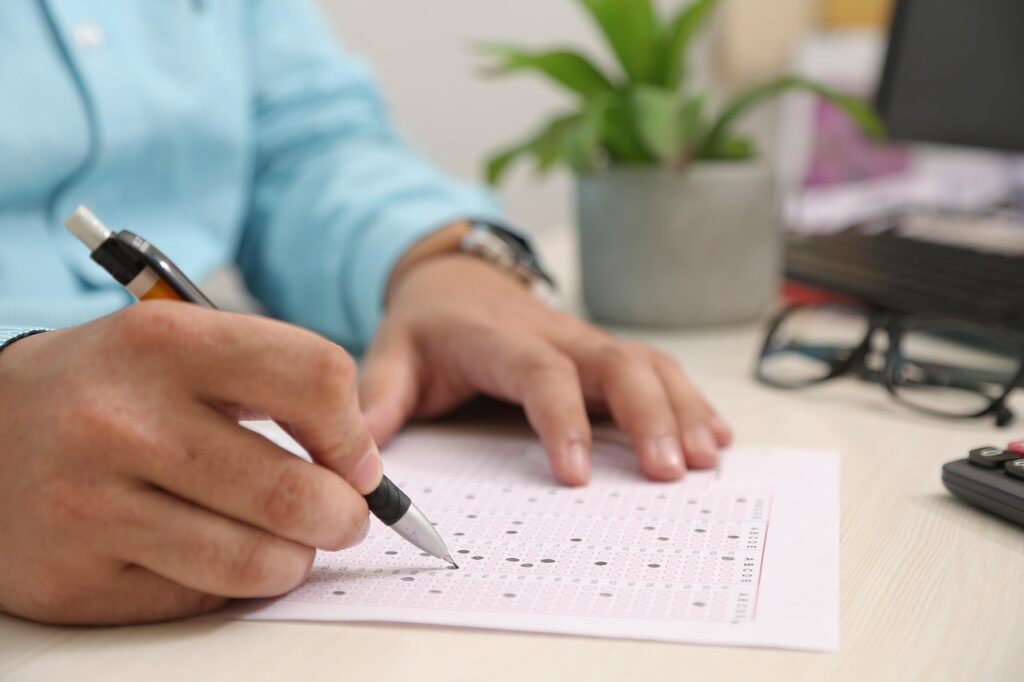The Prelude
The results of NAEP 2024 (National Assessment of Educational Progress-otherwise known as the ‘Nation’s Report Card) for grades 4, 8 and 12 are now available. The 2024 scores provide nationwide information in the areas of reading, mathematics, and grade 8 science. For the purposes of this article, I focus only on the reading portion of the assessment.
A Flurry of Responses
Of course, a bunch of articles appeared just following the release of the latest reading scores. Author Natalie Wexler stated the scores “triggered a tsunami of dismay”. Dana Goldberg of the NY Times wrote, “the poor scores [on the NAEP] indicate a lack of skills that are necessary for school and work,,,, recent reading declines have cut across lines of race and class. The drops remain pronounced for struggling students, despite a robust, bipartisan movement in recent years to improve foundational literacy skills.”
Author and former English professor, Melissa Gouty, wrote a riveting response to the most recent NAEP results on the platform Medium, entitled “How Can A Powerful Nation Have So Many Children Who Can’t Read? Undeniably Sad! It is a ‘member only’ article, so read some of the highlights:
“Reading is the gateway to knowledge, to understanding, to tolerance, and to enjoyment.”
“While teachers and educators hoped that the effects of the pandemic would begin to diminish and reading scores would begin to climb again, the opposite was true.”
“There’s a huge difference between reading a book and skimming a screen for information. Reading a book involves understanding characters, motivations, and nuances of language. Skimming a screen is based solely on finding information and speeding through text.We all need to develop “bi-literate brains” capable of quick-surface-skimming reading AND deep, thoughtful, investigative reading. Our children aren’t.” I will touch on this concept later in this article.
Dr. Peggy Carr, Administrator of NAEP

As many readers may be aware, Dr. Peggy Carr (long-time commissioner of of the National Center for Education Statistics and lead administrator for the NAEP) is now on Administrative Leave. This is part of the overall staff reduction of the United Stated Department of Education. The goal is to give individual states more control over public education standards. Dr. Carr is quoted as saying, “Our lowest performing students are reading at historically low levels.” No wonder Ms. Wexler likened the NAEP results to a ‘tsunami’.
Screenshot by Lori Josephson from National Center for Education Statistics
Why Did I Write Calling All Neurons! and Why Read It Now?
The “Teams”
Learning to make sense of print is a team sport. That is, it takes ‘TEAM EFFORT’ over several years of direct instruction to create a literate brain. Who are the teams?



TEAM 1: Specialized neurons that work together to create new neuronal networks, enabling us to read, spell, and write.
TEAM 2: The key stakeholders—teachers, educators, families, caregivers, and students—who all play a role in literacy development.
Why Calling All Neurons! Now?
It is imperative that all stakeholders, particularly the students, understand what needs to happen in the brain in order to create that ‘literate brain’. The human brain is hard-wired for oral language development. The same is not true in terms of making sense of print for both reading, spelling, and writing.
Calling All Neurons! How Reading and Spelling Happen explains this process in easy to understand language suitable for families, educators, and children ages 8 and up. In fact, I recently worked with a group of kindergarteners explaining some of the illustrations and concepts in the book. The kinders (and their teacher) were enthralled. Just the other day, I spoke with a former 2nd grade teacher who told me she would, “for sure use Calling All Neurons! as a read aloud if she still had a classroom.”
Although many books exist explaining this process for interested readers and professionals, no books exist explaining this process to older students, nor to adults who may not have had the time or expertise to read the lengthy and sometimes dense books explaining this process.

A Question
Let me pose a question. Don’t you think our nation’s students (and their families/caregivers and their teachers) would be more invested in their own achievement if they had a better understanding of what it takes to become literate? I SURE DO! So, read it now if you haven’t already read it. Then, share it with others if you’ve already read it and/or are aware of it.
Consider Some Statistics
A picture is worth a 1000 words. The graphs speak for themselves. The screenshots below come directly from the NAEP website.


The trends you see above are not promising. Less than 1/3 of 4th and 8th graders perform at a ‘proficient’ level or above. Alternatively, that means that over 2/3 of 4th and 8th graders function below a proficient level in reading. Atop of that is the lack of progress since 1992 with some improvement noted prior to the pandemic.
What Does ‘Proficient’ Reading Mean Anyway?
Students who read at a ‘proficient’ level have solid academic performance, demonstrating competency over challenging subject matter, including subject-matter knowledge, application of knowledge, and analytical skills. A 2018 study indicated students who read at a ‘proficient’ level read with 97% accuracy and read approximately 142 words correct per minute. Although the NAEP is a test of comprehension, a high correlation exists between oral reading fluency and reading comprehension. As literacy expert Anita Archer says, ““there is no comprehension strategy powerful enough to compensate if a student cannot read the words.”
What Does ‘Basic’ Reading Mean Anyway?
NAEP ‘Basic‘ denotes partial mastery of the knowledge and skills that are fundamental for proficient work at a given grade. Students who read at various levels of ‘basic’ read with between 82 and 96% accuracy and read between approximately 82 and 123 words correct per minute. Several levels comprise ‘Basic’.
In fourth-grade reading, students who score below the basic level on NAEP cannot sequence events from a story or describe the effects of a character’s actions. In eighth grade, students who score below basic cannot determine the main idea of a text or identify differing sides of an argument.
Furthermore, the 2024 National Assessment of Education Progress reported:
The percentage of eighth graders who have “below basic” reading skills according to NAEP was the largest it has been in the exam’s three-decade history — 33 percent. The percentage of fourth graders at “below basic” was the largest in 20 years, at 40 percent.”
Especially striking to me are the levels of fluency our nation’s 4th and 8th graders achieve. According to the 2017 update of Jan Hasbrouck’s Fluency Norms, 4th graders at the 10th percentile read 83 words correct per minute, students at the 25th percentile read 105 words correct per minuter, students at the 50th percentile read 123 words correct per minute, students at the 75th percentile read 143 words correct per minute, while students at the 90th percentile read 184 words correct per minute. Looking at the DIBELS 8th Edition, our nation’s 8th graders upper level 8th graders read 159+ words correct per minute, 50th percentile 8th graders read ~135 words correct per minute, 25th percentile 8th graders read ~128 words correct per minute, and 10th percentile 8th graders read below 120 words correct per minute.
Seems like the “Matthew Effect” is taking hold given these new NAEP scores. That is, the rich get richer (being a better reader helps students become even better readers), while the poor get poorer (poor readers are left in the dust),
For More Information

Here is the link to the NAEP 2024 Facts for Teachers.
This PDF explains:
- the purpose(s) of the NAEP
- the selection of specific schools and students as appropirate samples for the NAEP
- what teachers should expect
- an explanation of the differences between the NAEP and state administered assessments
Districts and states receiving Title I funds are required to participate in these biennial assessments (NAEP) according to the Elementary and Secondary Education Act. . The NAEP, is administered every 2 years; has been used as a measure of our United States’ students since 1969.
Adult Reading Levels
Things Don’t Look Good
This is what Melissa Gouty has to say about adult reading:
“Perhaps more telling than the children’s lowered scores is that those scores mirror adult scores, which have also declined over the same period.
As the parents and grandparents of these children are streaming more movies, spending more time on their computers skimming and scrolling, and walking around with a cell phone stuck to their hand, the adults’ lack of focus on reading is rubbing off on the kids.
After all, it’s hard to be motivated to learn a skill if you rarely see it demonstrated.”
According to Nat Malkus, Senior Fellow and Deputy Director, Education Policy Studies, adult performance trends on international assessments (PIAAC-Program for the International Assessment of Adult Competence) reflect those of students. Malkus goes on to suggest that external societal factors must be considered including as increase in screen time usage since 2012, the forced isolation as a result of the pandemic, and lesser interest in ‘reading for pleasure’.
How Many Books Have You Read This Year?

jI cannot help but share with you the graph from a December 2023 study depicting the numbers of books adults reportedly read in 2023. I, too, am far too guilty of scrolling on my cell phone instead of reading. Then when I finish scrolling and start to read—I fall asleep in short order! This behavior is nothing short of addictive in ways our society would never have thought possible. But here we are. These ‘newer’ societal behaviors place a greater burden on our educators in terms of teaching our young ones to become literate. Cell phone and screen owner beware!
Coda
I very strongly feel the urgency to speak out on behalf of the student population in our country. It greatly pains me to read about the decline of reading ability in both children and adults. If you are reading this article, share it with others. Important stuff and an important time.

Featured image by F1 Digitals from Pixabay


What’s the impact of the pandemic instruction that we’re now seeing in NAEP scores?
Hi Margaret,
Thanks for your question. Alas, the learning losses associated with the pandemic (I write this as I am recovering from my first bout with Covid–yes, it’s still out there) remain. I read that students continue to lack ‘academic-social skills’–that is, how to behave in a classroom, etc. Some more food for thought: Average reading scores in 2024 were lower than in 2022, with declines across most percentiles, except for the highest-performing students (90th percentile). Compared to 2019, the average score was lower by 5 points, indicating a concerning trend. The percentage of fourth-grade students performing at or above the NAEP Proficient level decreased by 2 percentage points compared to 2022 and 4 percentage points compared to 2019. Many states experienced losses in fourth-grade reading scores, with some losses being quite large, especially when compared to 2019. Specifically, states like Maine, Oregon, Nebraska, and Virginia showed significant declines. In addition, the lowest performing students fared even more poorly. A sad tale of woe to share. Lori